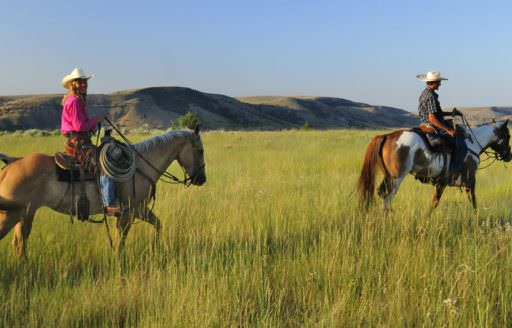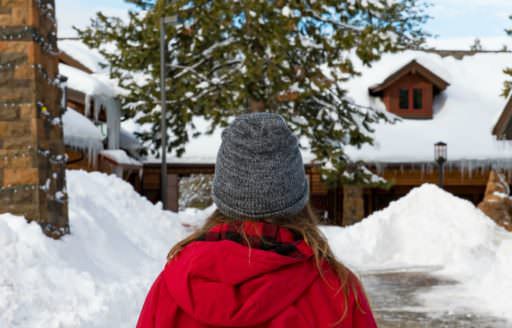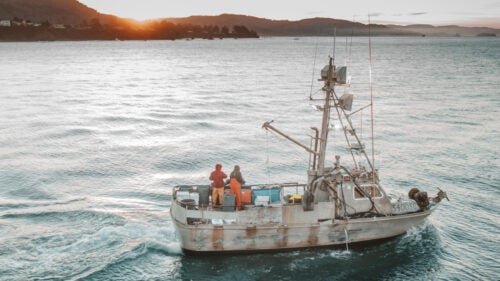Oregon is a food lover’s dream, from the farm-grown produce in its green valleys to the fish you can purchase right off the docks at coastal ports. Sourcing food straight from the people who grow and harvest it is budget-friendly and good for the environment, too. To help celebrate Food Waste Prevention Week (April 7-13, 2025) all year round, here’s how to shop smart and support local farmers and producers at the same time.

Preserve the Harvest With Summer Berries
One important way to save money and help prevent food waste is to stock up with locally grown produce in season, when ingredients are at their peak. You’ll get the best prices if you buy in bulk at a farmers market or U-pick farm.
Oregon is known for growing some of the country’s best strawberries, blueberries, blackberries, marionberries and raspberries. Once you have a flat of beautiful berries, store them in the trays you purchased them in to minimize bruising. Keep them unwashed and uncovered in the refrigerator if you don’t use them right away.
To keep berries even longer, preserve them like the pros do: Wash them, place them whole in a single layer on a cookie sheet and freeze until solid, then transfer to a gallon freezer bag for longer storage. Berries will be easier to use for smoothies and fruit crisps later in the year. Plan to make jam or other preserves with excess fruit. The Oregon State University Extension Service frequently offers low-cost or free classes on food preservation in cities throughout Oregon to help build your skills.
Take food-waste prevention a step further by being mindful of peels, seeds and other parts that might otherwise go into a landfill. If you’re juicing berries, adding the leftover pulp and seeds to commercial vinegar or vodka can make wonderful infusions.
At a farmstand or farmers market, ask about imperfect or overripe fruit. Often, vendors will save a box for home preservers willing to sacrifice beauty for budget fruit to process that day. It’s a win-win — you’ll save money and the farmer won’t need to relegate the fruit to the compost pile.
Oregon has many seasonal U-pick options, including blueberries that grow widely throughout the state at farms like The Blue Nickol in McMinnville, K & K Blueberries in Hermiston and Clear Lake Blueberry Farm in Florence. U-pick strawberries are plentiful at The Berry Patch in Roseburg, Jeff and Jen’s U-Pick in Dayton, and Valley Flora in Langlois on the Southern Oregon Coast. For blackberries and raspberries, try Boones Ferry Berry Farms in Hubbard, between Portland and Salem. Always call ahead to make sure U-pick is available on your desired dates. There are even more U-pick farms, farmers markets and other producers to visit along Oregon’s designated food trails.
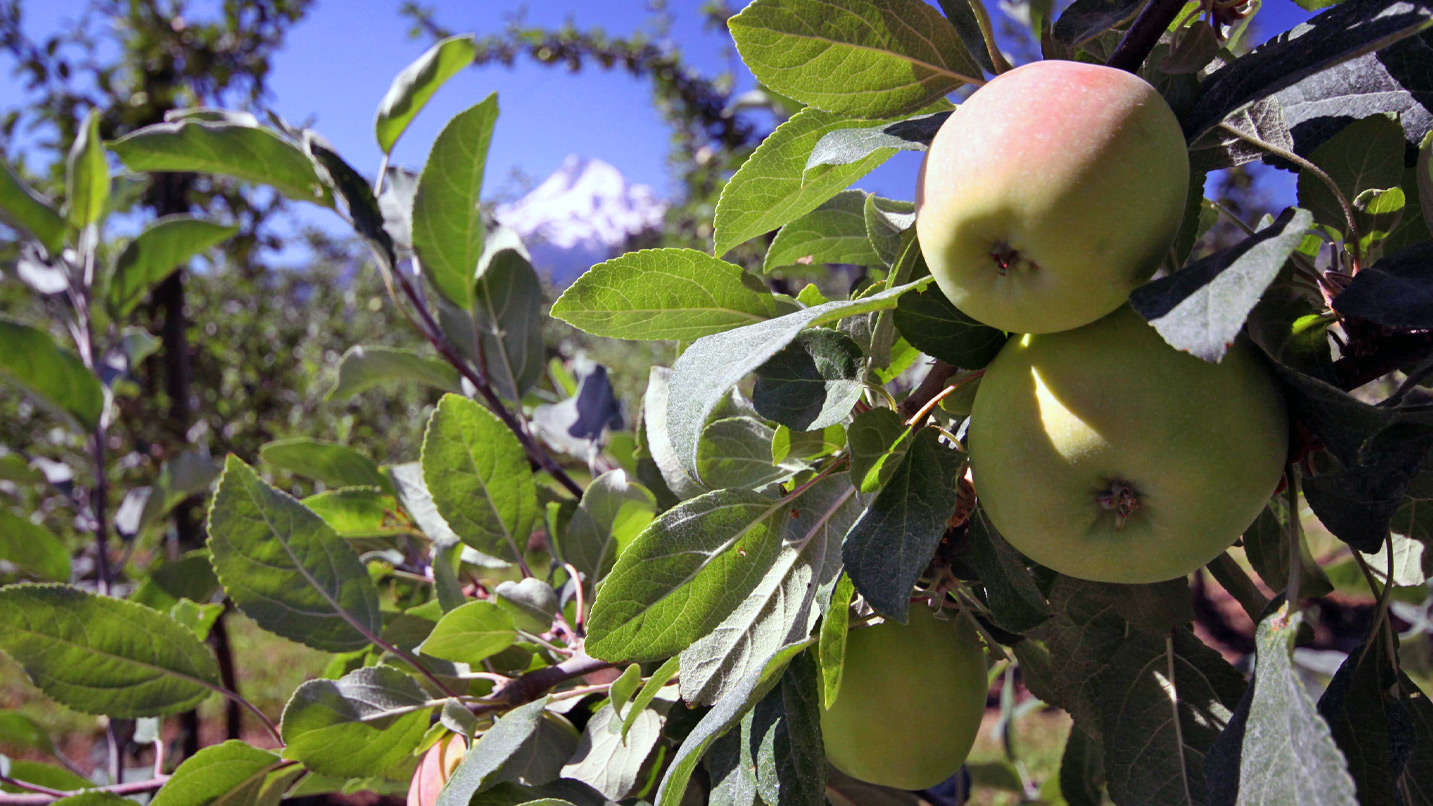
Save Money and Waste With Juicy Apples
Apples are another one of Oregon’s delights, and they’re grown from Southern Oregon to the Willamette Valley and Columbia River Gorge. Some early varieties, like Gravensteins, are best for fresh eating, but late-fall keeper apples like Gala, Fuji or Granny Smiths can last for months in a cool basement or pantry. Just be sure to remove any bruised ones before they start to rot — don’t forget the old saying that a bad apple spoils the bunch.
Make your own dried-apple chips for snacks with a food dehydrator. Some cooks leave the peels on home-dried apples, which not only provides fiber but creates less waste. Don’t toss the trimmings; apple peels and cores can also be used to make homemade apple-cider vinegar. Applesauce and apple butter can also be frozen or canned as a delicious topping.
If you’re looking for apples to pick or purchase in Oregon, consider a trip to a family-owned orchard. Beloved farms include Douglas Farm on Sauvie Island, Bell’s Orchard in Beaverton, Beilke Family Farm near Salem, Mt. View Orchards in Mt. Hood, Kiyokawa Family Orchards in nearby Parkdale, Leonard Orchard in Medford and Valley View Orchard in Ashland. In Eastern Oregon, visit Thomas Orchards in Kimberly.
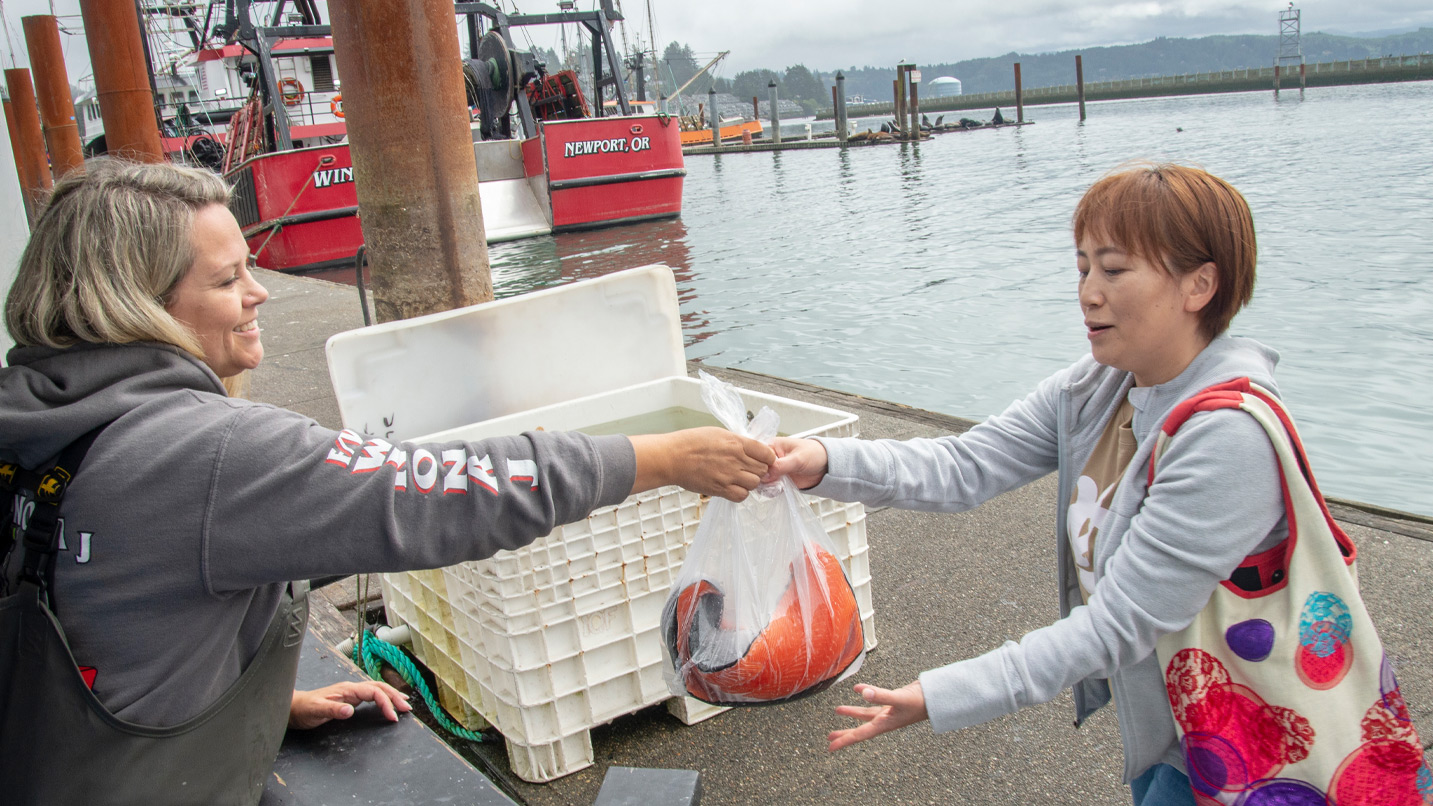
Buying Whole Fish From the Docks and Coastal Markets
Fruits and vegetables aren’t the only Oregon product to buy in bulk. Pack a cooler and head to the Oregon Coast to stock up on seafood. If you can, take a charter fishing trip, where your crew will butcher and package your catch for easy freezing and shipping. Or head directly to the docks to buy local seafood, from salmon to Dungeness crab.
Oregon State University’s Sea Grant program teaches visitors how to shop at the docks during its summer dock tours in cities like Garibaldi, Newport, Winchester Bay and Brookings. “When you buy off the dock, you get the whole fish,” says Cari Brandberg, co-owner of Chelsea Rose Seafood, a floating fish market in a converted boat in Newport. “You can watch how it’s processed, plus you’ll know where your fish came from.” Here fishmongers break down the fish to your specs and provide trim and parts that would likely be tossed at a large processing facility.
Each summer coastal fish markets prepare for home preservers waiting to can Oregon albacore tuna in bulk. For pressure-canning your own tuna, the Oregon Albacore Commission has a site dedicated to recipes and videos. Ordering directly from a market or off the docks means you can ask to keep more of the fish (like the delicious, fatty bellies and fish heads) that are often discarded.
For an even deeper dive into fin-to-tail dining, don’t forget to ask for the bones from your fishmonger. Use milder fish carcasses like rockfish to make seafood stock, or borrow a recipe from Finnish or Chinese culture to create a rich, warming salmon head soup. Heads and bones can be buried in your garden as fertilizer, too.






